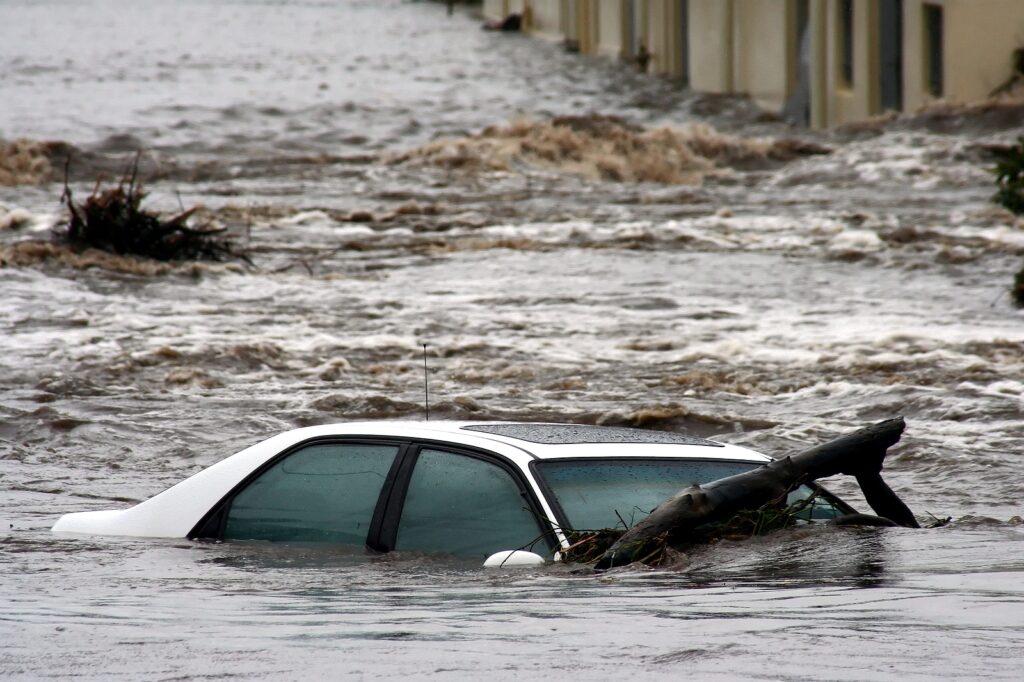Pool Theory Lessons from the July 4 Disaster in Kerr & Hunt County, Texas
On July 4–5, 2025, Central Texas experienced one of its deadliest flash flood events ever. Torrential rainfall—up to 6.5 inches in just three hours—caused the Guadalupe River to rise more than 35 feet, cresting at 37.5 feet in Kerr County. The rising waters struck overnight with no warning, sweeping away cabins, campsites, and entire communities along the riverbanks. The final toll: over 135 lives lost statewide, including 108 in Kerr County alone, roughly 37 children, with 27 deaths at Camp Mystic, an all‑girls camp in Hunt, TX.
Despite weather forecasts and flash‑flood warnings issued by the National Weather Service, local officials failed to deploy timely alerts. The county’s CodeRED system went live 90 minutes after firefighters requested activation, and many alerts didn’t arrive until late morning, long after floodwaters swept through communities and camps.
Kerr County Emergency Management Coordinator William “Dub” Thomas testified that he was ill and asleep during the crisis’s peak hours; other top officials were either unreachable or absent from the area. All the while, local flood mitigation systems had been proposed—and rejected—for years due to cost concerns.
This was not just a weather emergency—it was a failure of readiness. When functionality met fragility, Kerr County’s inaction mutated a bad storm into a crisis of catastrophic proportion.
What Went Wrong: A Breakdown in the Pool
1. Visibility Without Prepared Narrative
While flash‑flood warnings were issued by state agencies, most residents didn’t receive them—or understand their significance. Failed connectivity and outdated communication protocols left people unaware until it was too late.
2. Failed Leadership Response
When flood conditions hit, emergency leadership was absent, disconnected, or disengaged. County lead officials admit to being asleep during rising water levels, failing to activate backup systems or override protocols—even when volunteers and fire teams called for urgent alerts.
3. Politics Over Prediction
Despite repeated requests in prior years—including grant applications for sensor upgrades and siren-based alert systems—the Kerr County authorities resisted investments, citing cost and low local support. Ironically, neighboring Kendall County had a $60K early-warning siren system, aligning with state forecasts and sustaining zero fatalities—a tragic contrast.
Pool Theory Implications: The Damage of Uncontrolled Visibility
Unprepared Visibility = Explosive Consequences
Flash floods triggered rapidly. But without proactive channels—like sirens, siren-linked river gauges, SMS overrides or offline loudspeaker systems—the community surfaced visibility too late: bodies recovered, not stories told.
🧱 No Pre‑Established Narrative = Crisis Vacuum
When disaster struck, Kerr County had no platform to reinforce crisis messaging. Missing alerts, failing systems, and absent leadership created a vacuum—one that residents, survivors, and legislatures struggled to fill with clarity or trust.
🔄 Long-held Pool Instability = Unforgiving Exposure
Years of low flood literacy, absent warning expansion, and resisted infrastructure upgrades compounded into a perfect internal storm. In Pool Theory terms, the foundation was brittle—and when external pressure collided with internal weaknesses, collapse became inevitable.
🛠 What Texas Lawmakers Are Doing (and What Comes Next)
At a joint legislative hearing in Kerrville on July 31, state officials sharply criticized Flood Authority and county leadership. Kendall County was held up as a model, while legislators committed to passing over a dozen bills to upgrade alert infrastructure, reinforce camp safety, and mandate early evacuation protocols.
The Upper Guadalupe River Authority (UGRA) pledged $1.5 million for flood mitigation and warning upgrades—but skepticism remains after years of underinvestment and deferred duty—even while holding reserves.
Editorials from the Houston Chronicle have called for legal accountability, arguing that sovereign immunity should not shield government negligence from civil accountability and preventive investment incentives.
Reframing Recovery Through Pool Theory
Visibility Means Everything—but Not Without Strategy
The flash-flood emergency highlights that being visible isn’t the issue—it’s being visible unprepared. Communities need multi-channel alert infrastructure tied into real-time systems.
Narrative Readiness Saves Lives
Imagine if local officials had regularly communicated flood risks and engagement protocols via sirens, printed materials, school and camp programs, or outdoor signage? That narrative work may have saved lives.
Your Pool Is Your People
Trusted systems—like siren-linked sensors or community loudspeakers—act like personal branding in crises: visible, trusted, learned. Kerr County lacked that readiness, even while hazard awareness had been flagged for years.
Crisis Moments Reveal Systemic Pools
The disaster became a test: not of meteorology, but of machinery—organizational, structural, political. When water swept in, the latent weaknesses surfaced.
How Arma Communications Would Approach This Differently
At Arma, our Pool Theory framework would lead with preparedness long before weather forecasting turns catastrophic. For rural or hazard‑prone regions, we help build:
- Persistent risk awareness campaigns (raising flood IQ, as editorialized in recent coverage)
- Multi-modal alert infrastructure plans (sirens, water-gauge networks, offline messaging, camp protocols)
- Narrative platforms and response flows to manage public trust during early-stage emergencies
- Accountability and continuity roles embedded with adaptive thresholds, not discretionary triggers
Systems like these reset community-level visibility control from reactive to proactive.
Final Lessons
- Flash flood Alley isn’t new—predictable risk requires persistent readiness. Kerr County had years to act.
- Visibility without strategy is crisis exposure; the waters exposed long-standing silent failures.
- A trusted narrative and communication hub can turn warnings into actions—not just alerts lost in the night.
- Unprepared systems create avoidable loss. Crisis accountability needs both infrastructure and institutional foresight.
Despite tragic loss, Kerr County now faces a basin full of opportunity—for reform, accountability, and climate-smart preparedness. If your organization risks void misalignment between forecast and action, AC can help you build that infrastructure before the storm becomes your defining moment.


